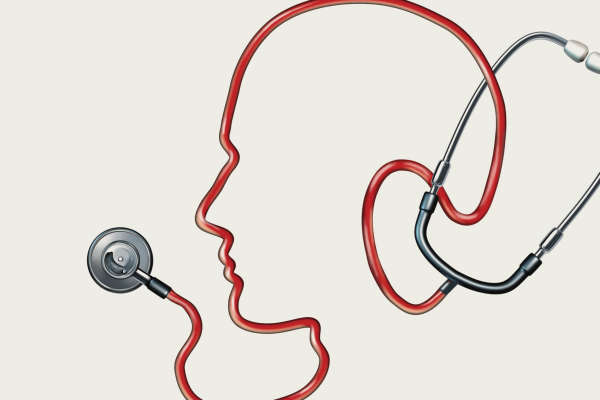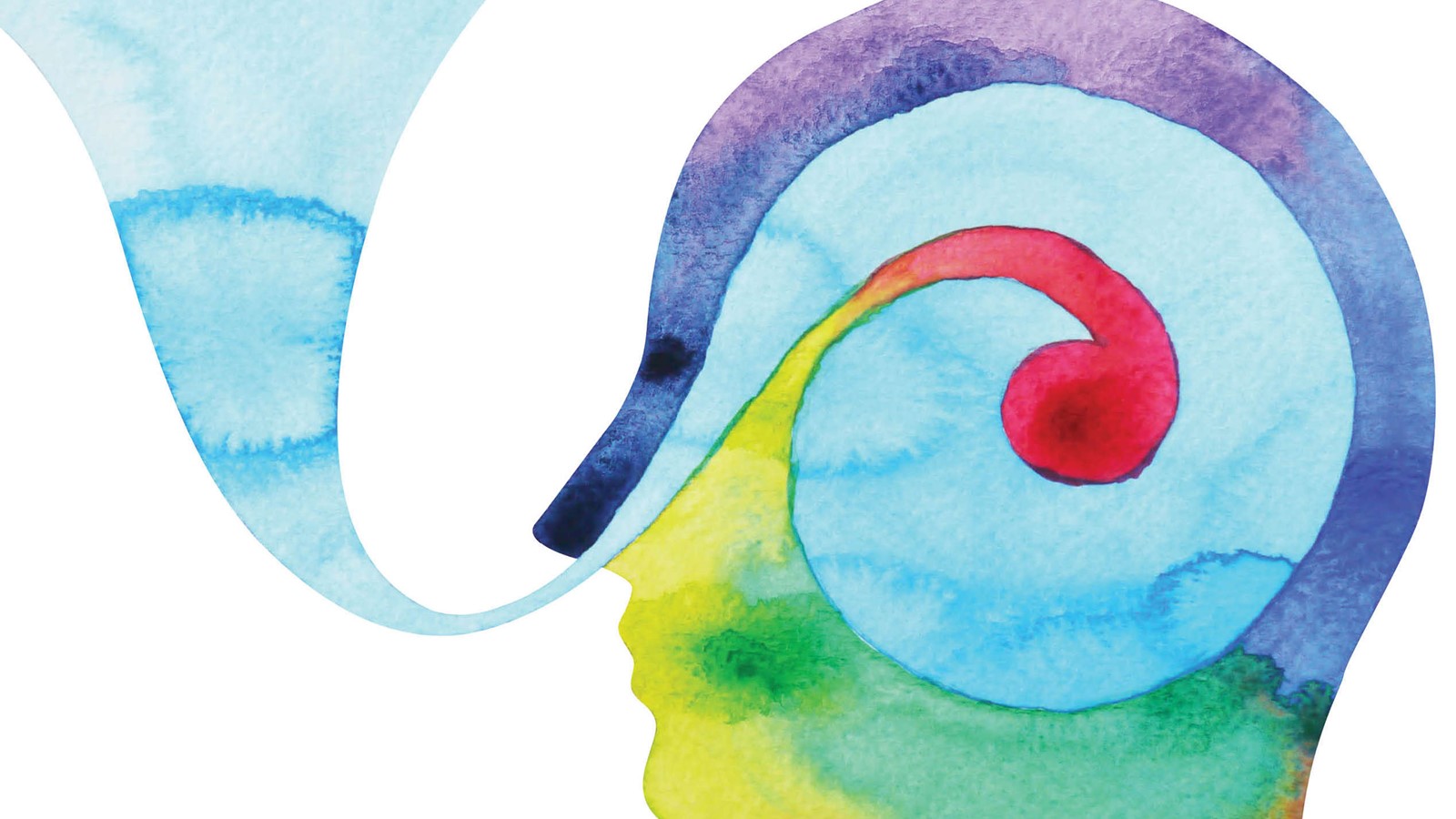There is a Scarborough… and there is a Scarborough!’ This is a comment I have heard frequently expressed about this North Yorkshire coastal town while here on a year’s sabbatical. Rather like ‘New York: New York’, the speaker says it twice. The second time the tone of voice is raised, and emphasis placed on the ‘a.’ I have a sense of what this expression means, and it needs no explanation. For me these ‘two Scarboroughs’ capture the differing experiences that my husband Robin and I have of the place.
As I write this I am sitting overlooking the sea in Scarborough’s North Bay on a writing retreat in an attempt to complete a long unfinished piece of business, which is to complete my doctoral thesis exploring coaches’ experience of mindfulness training using poetic inquiry.
For me, Scarborough is a little gem; a place of hidden treasures and where in just three months I have written three articles (including this one); a book review; a book chapter;1 a book2 and submitted a manuscript for a further book, due out in May.3 I have been to breakfast meetings and connected with other professional women and, in casual conversations, discovered a creative underground; as one said to me, ‘It [Scarborough] is fast becoming the “St Ives of the East.”’
There are superb physical spaces that embody creativity. A grade II listed building with a rich literary heritage that is home to independent artists and regularly hosts music performances, lunchtime seminars on literary topics, and exhibitions. Walk into this building and the old sits alongside the new. The old houses the Sitwell library; walk into this, and there you get a sense of calm. Turn left and you find yourself in the new, the gallery. It is spacious, open and modern, with large windows that look out over Valley Gardens towards the South Bay. The feeling here is one of unlimited possibilities and of enterprise.
Walk out of this building and adjacent is another old building; metaphorically, a phoenix rising from the ashes. This is undergoing major regeneration and its intention is to become an oasis of peace and calm; a holistic wellbeing centre, with a particular focus on meditation and mindfulness. Leave this and walk through a small park to an Art Deco building: a local theatre with a national and international reputation. It is where playwright Alan Ayckbourn premieres much of his new work and that of other playwrights before it tours the rest of the UK.
Walk down to Scarborough’s South Bay and there is The Spa, a stunning location with an eclectic programme of events and experiences, ranging from jazz and classical music, to opera and wrestling.
To develop a sense of ‘this Scarborough’ I have spent time dwelling in this space. In contrast, my husband Robin visits. He spends little time here and experiences a very different place. He sees the façades of faded glory, of pound shops and neglected properties that once would have been homes to Victorian gentry. Now, these are multi-occupancy, owned by absentee landlords, home to some of the more vulnerable in our society. Robin makes observations about the problem with parking; the lack of good restaurants and the absence of double-glazing on the original Victorian windows in the apartment. They rattle, lose the heat and occasionally leak. This is not through neglect, but it is what happens when the weather is particularly rough, as it so often is.
It is a reminder that, alongside the joy of overlooking the sea and the beauty that comes with the ever changing winds, there is harshness. For Robin, ‘this Scarborough’ feels like a place that is ‘cut off’ and at the ‘end of everything.’
The ‘autoethnographic turn’ in coaching
I want to share these reflections with you, as it is in keeping with my call for coaches to turn to autoethnography (AE)1 and, I think, the two ‘takes’ on Scarborough, is a useful metaphor for what I want to explore in this article, which is about finding a ‘place of zero’ to dwell; and in dwelling, out of this space creativity can emerge and integration can be achieved.
Because, simply put, AE calls for integration. Integration of the personal, with the professional, with what we experience externally, in our culture, and internally, with what we think, feel and sense, our cognitive and embodied ‘ways of knowing’.1 It is an approach that I discovered through my doctoral project and, while largely absent in the field of counselling and executive coaching theory and practice, it is one that is widely embraced in sports coaching.4 For somatic leadership coach and consultant Richard Strozzi-Heckler, executive coaching represents the Cartesian mind-body split:
‘Coaching primarily addresses what the client is doing; separate from how they are being; how the self is inextricably linked to the actions and behaviours in which they are engaged. Tips and techniques are provided so that the person coached will be able to do their … job, health, relationship, career, etc in an improved way, much like behaviour modification. This type of coaching does not take account of the whole person.’5
Why AE matters: a shifting consciousness
Emerging approaches such as AE and mindfulness reflect a shifting consciousness, of integration rather than separation, with a growing sense of unease with the Cartesian dualism, even within scientific communities. Take, for example, eminent psychologist Ellen Langer, who asserts that the mind/body split is problematic and no longer tenable. She calls for a reworking of our understanding of the relationship between the mind and the body because, she argues, the scientific search for pathways from one to the other has been misguided, even mindless.6
As I write this, I sense that some readers may respond, ‘So what? This is nothing new; I have always worked with the whole person in an integrative way.’ As a practitioner, trained in therapeutic coaching and organisational Gestalt, interested in the intersection between coaching and counselling, I would agree. However, as there is a Scarborough and a Scarborough, in my observations as an autoethnographer, there is a coach and a coach. What I mean by that is that, having been involved for two decades in coaching, supervising coaches and in developing coaching programmes, I have observed therapists who practise as coaches working in one way and those from a business background working in another. Even in their ‘way of being’ in workshops where both are present, there is a difference.
At the risk of oversimplification the former focus on the personal and relational and the latter on, Strozzi-Heckler suggests, improving performance; the Cartesian split embodied. As with our respective ‘takes’ on Scarborough, no single way of being as a coach is ‘right’: it is, in the view of a Gestaltist, not either/or, but a case of both/and – of integration.
Counsellors who coach: ‘facilitators of integration’
Increasing evidence from neuroscience suggests our role as coaches needs to be one of ‘facilitators of integration’, helping clients to heal the split between mind and body; between doing and being. This means accepting that what we bring to the coaching endeavour, shapes the way in which we work with clients.1 To do this, executive coach Mason de Chochor suggests, we need to embody integration and to ‘reach a place of zero’. This is a particular type of consciousness where, as coaches, in order to develop and transform others, we have to journey into ourselves to become what he calls ‘conscious change agents’ operating from a place of zero: this means ‘getting out of our own way’.7
In psychotherapeutic training, we spend years in personal therapy and group process in order to operate out of that place, to get out of our own way. However, writing as an executive coach with 30 years in financial services, de Chochor argues that the current climate is one typified by a collective mindset of fear and risk aversion; a climate in which individuals are just surviving. In this volatile, uncertain, complex and ambiguous (VUCA) world,8 typified by what he calls a ‘malignant malaise’ in which there is little room for creativity, we are trapped in what professor of leadership, Kets de Vries, describes as ‘the prison of busyness’.9
The importance of integrating mind and body, and finding value in what appears to be, as described by Kets de Vries, ‘doing nothing’9 was brought home to me in the poetry generated by executive coaches, in my doctoral work. This involved non-therapeutically trained leadership and organisational development professionals participating in an eight-week mindfulness programme, contextualised for the focus of their practice, namely executive coaching for emotional intelligence.
Reaching a ‘place of zero’ through ‘nine words’
Over the eight-week programme, supported by a workbook, audio CD and additional activities, captured in part in The Mindfulness at Work Pocketbook, 2 participants engaged in a mindfulness practice, introduced around a particular theme each week. This was followed by an exercise I created called ‘playing with nine words’.1 The intention behind using this freewriting process was to enable coaches to capture their experience of dwelling in a place of zero, and out of this space to then create a poem around the theme. Below I outline the steps involved and then, with her permission, I share ‘Jane’s’ poem and reflections around the theme of compassion.1,10
Playing with nine words
- Taking the word that first came to mind after the mindfulness practice, write for three minutes, not letting the pen stop.
- Now, skim read what you have written and highlight three words. Select one word.
- Write for a further three minutes, without stopping.
- Skim read again, and highlight three more words. Select one more word.
- Write for a further three minutes, again without stopping.
- Skim read what you have written, without judgment and highlight three more words.
- You should now have a total of nine words.
- Write these nine words as a list, each on a separate line.
- Now, play with these nine words – be creative. You can add words – and, for this exercise, write a poem starting with the words: ‘Compassion is...’
- Create a poem using the nine words.
© Chapman-Clarke1,10 Reproduced with permission of Liz Hall and Kogan Page.
To help coaches with the process, this was the guidance given:
- Keep to a time limit
- Keep your hand moving
- Don’t cross out
- Don’t worry about spelling, punctuation, grammar
- Go with the flow (freely associate; let your ‘unconscious’ do the talking; creativity cannot be explained by conscious processes alone)
- Don’t think or get logical
- Go with where the energy takes you; notice and be compassionate if it feels a little ‘scary’.
Coaches were then asked to reflect on what they had written through the process of self-inquiry.
When I read this:
- I notice…
- I am surprised that...
- I realise that...
- I am aware that…
- I feel...
The nine words in action: ‘Jane’s’ experience
‘Jane’ is an advanced coach and after a successful career in executive education in the further education sector has been in private practice since 2012. She became involved in my research as she was curious about mindfulness and how this approach might develop her practice. After engaging in the nine words exercise, what follows is a poem she titled Befriending: a statement. The theme was compassion, and the poem was created from the following nine words: feelings, compassion, sadness, loneliness, self-doubt, warmth, softness, calm, peaceful.
Befriending: a statement
Turmoil and stomach churning
not at all discerning
Sadness, loneliness is part of learning
To be compassionate towards oneself
Feelings soften when widening the net
to bring those dear to you to suffer less
Strangers, neighbours deserve the same Compassion,
Along with warmth and peace in their lives
So now in this moment a calmness descends
To get on with the day’s demands
We all shall be free of loneliness and self-doubt
And feel the love that is being dished out.
Reproduced with permission of the author
From her self-inquiry, Jane observes her poem is about extending compassion to herself:
‘Having compassion for oneself is not easy, especially when the emotions that are manifested are not necessarily telling the true story. Feelings of distress bring about irrational thoughts, which then lead to feelings and emotions that govern our next move or action. To seek the freedom from these emotions, I want to engage in mindful meditation, allowing myself to tap into happiness and joy that is so richly deserved, knowing that emotions and thoughts are just temporary and not necessarily the truth at all…’ And she reflects on the power of dwelling in a place of zero:
‘I am more and more becoming to accept what is… and acceptance gives me peace from worry and emotions, even if it’s only for a short time.’
The impact of dwelling in that ‘place of zero’
As a result of involvement with the programme, Jane reports that she is now more resilient; and can accept client feedback and enjoy ‘mindful moments’. What she means by this is that mindfulness affords her an opportunity to dwell in a space that doesn’t require her to take a sabbatical in Scarborough! It is a place in which she observes: ‘I may not be able to get on my cushion for half an hour, but just stopping and noticing when I am getting bogged down in the story, is invaluable; it may not be reality at all, just thoughts.’
For this non-therapeutically trained coach, poetry is now an integral part of enabling her to find a ‘voice’ for making sense of dwelling in a place of zero. And, in terms of her practice, Jane has shared the exercise with clients and other coaches, who have similarly been impacted by the process and by discovering the value of dwelling in a place that is seemingly one in which we are ‘doing nothing’.
In a recent article in Therapy Today, clinical director Kevin Friery, of Right Management, wrote of his frustrations with workplace counsellors. His main criticism was, he asserts, their inability to think ‘outside of the box’ and engage with a ‘different population’.11 However, as I have illustrated in this article, just as there is a Scarborough and a Scarborough, there is a coach and a coach. In making this distinction I suggest that Friery is perpetuating the split highlighted by Richard Strozzi-Heckler, between the personal and the professional; between health and performance; between being and doing.
Counsellors who coach are, I believe, at a distinct advantage, as they are able to operate as facilitators of integration and help clients dwell in the ‘place of zero’. This is because, at the core of our training, first and foremost is the ability to ‘get out of our own way’. It is a quality that is invaluable in a VUCA world, typified by a malignant malaise; a world in which we have become prisoners of busyness.
Counsellors who coach, who operate as ‘conscious change agents’, can help clients flourish in this world, to achieve ‘mindful moments’ and to reach that ‘place of zero’, out of which creativity can emerge and integration between doing and being be found. Because, as neuroscientists attest and as practitioners we observe, perpetuating the Cartesian split is no longer viable or tenable.
Margaret Chapman-Clarke is a chartered and registered psychologist, Gestalt coach, mindfulness practitioner, teacher and researcher. She writes, speaks and facilitates workshops on emotional intelligence, resilience and mindfulness in organisations. She is on the editorial board for three coaching journals, external examiner on Coaching and Positive Psychology at UEL and founding member of the Special Group in Coaching Psychology in the BPS.
More from Coaching Today

An ‘effecticient’ intervention: working with children and young people
Open article: The idea of removing the somewhat artificial boundary between coaching and counselling and offering an all-in-one package that adjusts by the moment is beginning to make ground in providing the kind of help that young people want. Eleanor Patrick explains her working model. Coaching Today, January 2016

'The coach will see you now...': developing doctors as coaches in an acute hospital setting
Open article: Consultant physician Dr Debra King describes an initiative to implement an internal coaching strategy by training doctors in coaching skills. Coaching Today, October 2015

The stories we tell: a narrative approach to coaching
Open article: What role do myth, fable and story have in constructing our identity? Narrative coach Sue MacMillan demonstrates how we can use stories to help clients gain new insight and understanding and swap unhelpful or harmful scripts for those that offer hope, healing and possibility. Coaching Today, July 2015
References
1 Chapman-Clarke M. Coaching for compassionate resilience using creative methods: a call for a turn towards autoethnography. In: Hall L (ed). Coaching in times of crisis and transformation. London: Kogan Page; 2015 (pp70–95).
2 Chapman-Clarke M. The mindfulness at work pocketbook. Arlesford: Management Pocketbooks; 2015.
3 Chapman-Clarke M (ed). Mindfulness in the workplace: an evidence-based approach to improving wellbeing and maximising performance. London: Kogan Page; 2016.
4 Sparkes AC, Smith B. Qualitative research methods in sport, exercise and health. Abingdon: Routledge; 2014.
5 Strozzi-Heckler R. The art of somatic coaching: embodying skilful action, wisdom and compassion. Berkeley, California: North Atlantic Books; 2014.
6 Langer EJ. Mindfulness forward and back. In: Ie A, Ngnoumen CT, Langer EJ (eds). Wiley handbook of mindfulness: Volume 1. Chichester: Wiley/Blackwell; 2014 (pp7–20).
7 De Chochor M. The conscious change agent: looking inside ourselves as a path to developing others. In: Mowinski J, Francis-Jennings L. Complexity unravelled: the power of collaboration in successful change leadership. Oxford: The Change Leaders; 2015 (pp97–107). Available online at www.fast-print.net/bookshop.
8 Bennett NG, Lemoine J. What VUCA really means for you. Harvard Business Review: January, 2015.
9 Kets de Vries MFR. Doing nothing and nothing to do: the hidden value of empty time and boredom. Organizational Dynamics 2015; 44(3): 169–175. doi.org/10.1016/j.orgdyn.2015.05.002
10 Chapman-Clarke M. Toolbox: nine words to reach zero: evaluation of the ‘playing with nine words’ from coach and client. Coaching at Work, 2015; 10(6): 48–50.
11 Convey B. Workplace wellbeing in a time of austerity. Therapy Today 2015; 26(10): 8–10.
